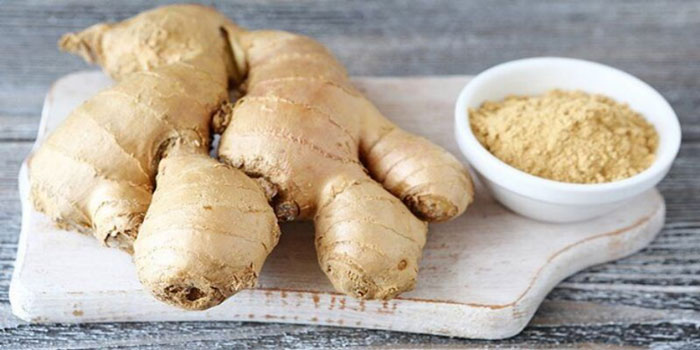What You Should Know About Foods for GERD
Oct 24, 2023 By Madison Evans
Acid reflux (heartburn) is common, and most people experience it at least sometimes. However, some individuals have it practically constantly, along with symptoms such as searing pain, bloating, and burping. Experts estimate that around 20% of the population suffers from gastroesophageal reflux disease (GERD), a chronic ailment characterized by acid reflux. The esophagus is normally shielded from stomach acid by the esophageal sphincter. This muscular tube relaxes to allow food to enter the stomach and tightens to prevent it from reentering the esophagus. However, food may enter the esophagus more easily if the sphincter weakens. Ekta Gupta, MBBS, MD, a gastroenterologist at Johns Hopkins Medicine, says, "diet has a crucial impact in managing acid reflux symptoms and is the first line of treatment employed by persons with GERD."
What Causes Gerd?
GERD, or gastroesophageal reflux disease, is a more serious kind of reflux that lasts for weeks or months. It develops when the lower esophageal sphincter (LES) muscle weakens or relaxes excessively. The lower esophageal sphincter (LES) is a group of muscles at the bottom of your esophagus. After ingestion of food or liquid, the LES muscle typically contracts firmly. So stomach acid won't creep into your food pipe when you have GERD. Stomach acid leaks into the esophagus because the sphincter muscle doesn't seal securely.
Symptoms of GERD include, in contrast to the occasional heartburn associated with GER, the following:
- With a burning sensation in the center of the chest or the neck.
- The backward movement of stomach contents into the esophagus, mouth, or throat.
- Hurting chest.
- Nausea.
- Difficulty in swallowing.
- Sputum production issues, or coughing and hoarseness.
Oatmeal Can Absorb Stomach Acid
The good news for those prone to acid reflux is that the American Association of Retired Persons reports that "Oatmeal, in particular, absorbs stomach acid" (AARP). Overnight oats are a delicious and healthy breakfast option for those with busy morning schedules. Brown rice and couscous are two more sources of fiber with a comparable impact.
Ginger: An Age-Old Cure

The anti-inflammatory properties of fresh ginger have long made it a go-to for treating stomach aches of all kinds. Whether you choose to drink ginger tea, chew on a piece, or use it liberally in the kitchen, there are many ways to acquire your recommended daily allowance of ginger. Up to 4 grams per day is safe for most people to consume.
Putting The Right Sauce On Pasta
People with GERD should avoid tomatoes (which are acidic) and thick sauces. Unfortunately, many traditional Italian foods are off-limits due to this ban. But if you must have pasta, go for something light and brothy. Research published in the June 2018 edition of the World Journal of Gastroenterology found that consuming high fiber helped reduce GERD symptoms.
Eat Bananas
Bananas and other high-alkaline (low-acid) foods may be helpful for GERD because they coat the esophagus, which may reduce irritation. Pectin, a soluble fiber that aids digestion, is also abundant in bananas. Melons, cauliflower, fennel, and nuts are all examples of alkaline foods with high pH levels. The acidity of a material may be measured using the pH scale, which ranges from 1 to 14. Acidity is inversely proportional to pH; low values indicate strong acidity, and high numbers indicate low acidity. There is no inherent meaning to the number seven in the center.
Fill Your Plate With Root Vegetables
Johns Hopkins Medicine reports that root vegetables, including sweet potatoes, carrots, and beets, may help alleviate acid reflux symptoms. Overeating, a common cause of heartburn, is avoided thanks to the satiating effects of these high-fiber meals. Green beans, asparagus, and broccoli are among the high-fiber vegetables.
Foods That Are Watery And Hydrating
Stomach acid is less toxic when diluted with water. To that end, eating meals rich in water content may help alleviate GERD symptoms. Vegetables like celery, lettuce, and cucumber fall within this category. Fruits are also available, including watermelon, mangoes, blueberries, and apples. Soups and herbal teas made with broth are other good options.
Foods To Stay Away From When You Have Gerd

Foods that are heavy in fat, salt, and spice irritate the digestive tract. It would be best to avoid fast food and fried items for your health. Pizza, fatty meats, cheese, and processed or snack foods are also off-limits. Despite their positive health effects, the acidity of meals like citrus fruits and tomato-based sauces may lead to heartburn.
Conclusion
As the name implies, GERD refers to a condition in which stomach acid flows in the incorrect direction up into the esophagus. When stomach acid flows backward, it's called acid reflux. Acid reflux irritates the esophagus, which may lead to heartburn. Those who suffer from GERD should be careful about what and how much they consume to prevent these consequences. Acid reflux may create a painful burning sensation in the esophagus. You can reduce the likelihood of experiencing this discomfort by eating slowly, avoiding snacking late at night, and waiting at least two hours before lying down or going to bed after eating. Making smart dietary choices is also important in reducing the severity of GERD symptoms.







